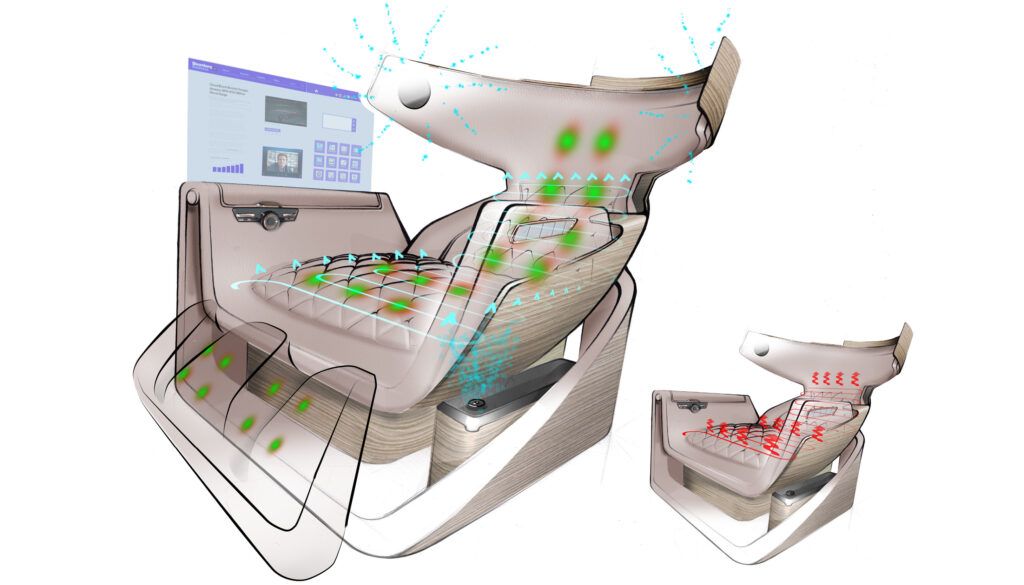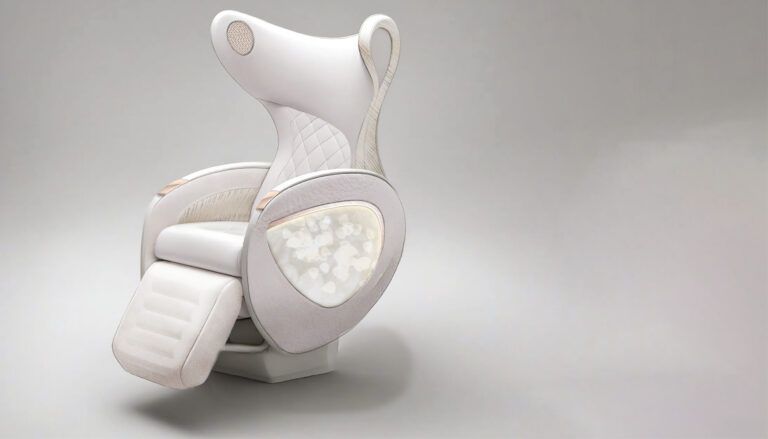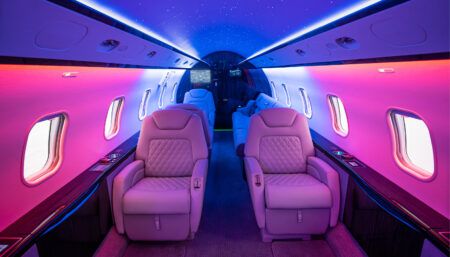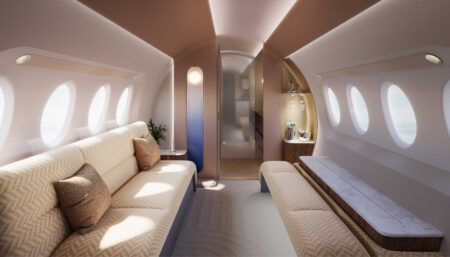Challenged by Business Jet Interiors International to create a seat concept for a hypothetical customer, to showcase customisation possibilities, Robin Dunlop of Altea and Marie Waendendries of My Wings Studio created the PEA seat for a fictional princess.
Robin Dunlop of Altea and Marie Waendendries of My Wings Studio teamed up for this concept. Inspired by the fairytale The Princess and the Pea, they created the character HRH Princess Éléonore of Lys.

A modern and refined royal in her early 30s, the princess has an acute sensitivity to texture, fragrance, light, and so on. “Known for detecting even the slightest imperfection, Eléonore has become a symbol of exquisite discernment,” says Waendendries. “She travels frequently for diplomatic, artistic and humanitarian missions, and demands a flying experience that meets her unique sensory and emotional standards. She is a sovereign of subtlety, quiet elegance and meaningful presence. In Eléonore, we found our muse – a symbol of today’s luxury traveller, she is emotionally intelligent and deeply attuned to her surroundings.”
Dunlop explains that the design has three pillars; posture (essential for comfort); emotion (essential for a luxury experience); and aura (because it needs to be subtle yet unforgettable). Together these three pillars form the acronym PEA. Every texture was chosen for its gentle feel and subtle luxury. “The resulting seat is a sculptural statement, embracing the body like a tailored garment,” says Dunlop. “Inspired by couture, it balances softness and structure, sensuality and restraint. Every detail, from tactile surfaces to hidden technologies, was designed to transform the seat into a sensory and emotional cocoon.”
Drawing on the duo’s existing partnerships with Inflight Canada and AwEsperienze, a full sensory immersive experience – including haptics, LED lighting, aroma and spatial audio – is fully integrated into the seat platform with full synchronisation. Precision haptic massage provides adaptive, real-time response to body position and muscle tension; cooling/heating can be personalised or set to adjust automatically to body or cabin temperature; dynamic ambient LED lighting adjusts automatically in line with the person’s biological clock; and spatial audio provides immersion in the IFE. There is the potential for user presets and intelligent adaptation over time. This means haptic feedback can be synced with audio and visual content, not only for IFE, but to support wellness routines. Multisensory breathwork, meditation and sleep sequences can be created to regulate the nervous system (for emotional and sensory regulation), with therapeutic aroma dispersal to complement each routine.
Waendendries added that all the technologies are either certified or will be in the near future. “This project allowed us to have fun with purpose, grounded in technical constraints, yet lifted by imagination,” she adds. “It was a chance to explore the future of high-end cabin design.”
The duo also used this project to test how emerging AI tools can complement their existing workflows, from character rendering with prompt-based engines such as GPT, to sketch development using Vizcom AI. These experiments were run alongside more traditional tools and processes, including the Adobe Creative Suite and Rhino 3D.

This feature was written by Izzy Kington and first published in the July 2025 edition of Business Jet Interiors International as part of the Seat Design Challenge feature.





